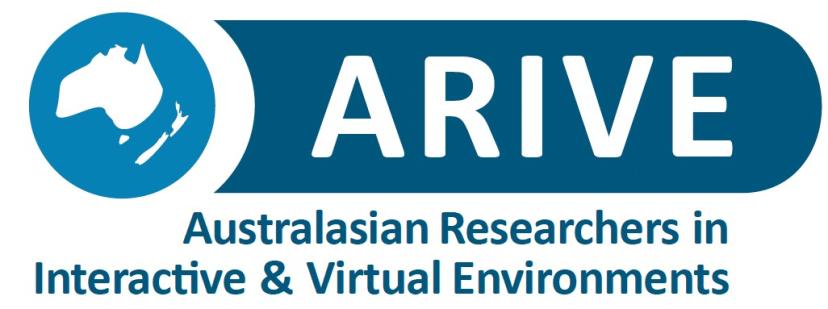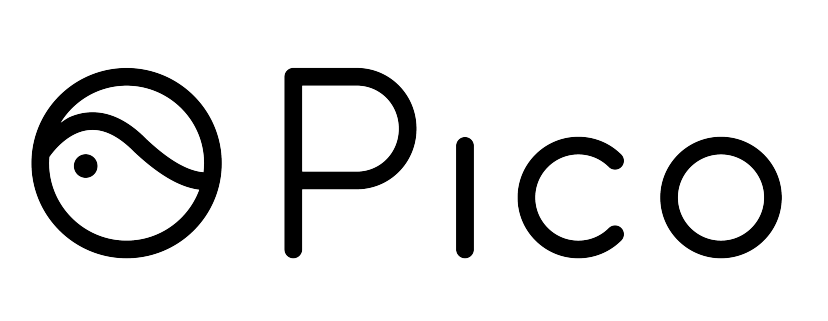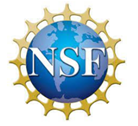
3DUI Contest
Please use this form to vote for the best 3DUI contest submission.
Fast Forward
Spatial Exploration with a WiM for Capturing 3D Dioramic Snapshots
Booth B33 - Expo Hall A
Kevin Yu: Technical University of Munich; Ulrich Eck: Technische Universität Mënchen; Nassir Navab: Technische Universität Mënchen
Immersive Virtual Reality can be a memorable medium for story-telling and artistic expression. However, taking snapshots of VR applications is commonly only possible by taking a two-dimensional screenshot on a tethered PC. We propose to capture 3D snapshots using the interaction technique World-In-Miniature (WiM) by using virtual RGB-D cameras to create three-dimensional snapshots that can be exported and viewed outside the application. We further describe a novel interaction method to fine-tune the content shown inside the WiM with VR controllers. This project is open-source and can be accessed at https://github.com/kyuq/3DWiMSnapshot
ArtScape: Gamified Virtual Reality Art Exploration
Booth B32 - Expo Hall A
George Michalakis: University of Patras; Agapi Chrysanthakopoulou: University of Patras; Konstantinos Kalatzis: University of Patras; Isidoros Michalellis: University Of Patras; Kostantinos Moustakas: University of Patras
ArtScape is a virtual reality escape-room aiming to familiarize and inform the users about various paintings and artists. Through the integration of various 3DUI techniques, a fully immersive experience is created. A robot assistant provides all the necessary information needed to solve the puzzles. The player can insert and extract objects from paintings, watch entire scenes come to life, and use 3D objects to affect the 2D world, thus creating a living artwork. A creative game that both entertains and educates, hoping to bring more people closer to art.
The Rubber Slider Metaphor: Visualisation of Temporal and Geolocated Data
Booth B26 - Expo Hall A
Antonin Cheymol: Univ Rennes, INSA Rennes, Inria, CNRS, IRISA; Gwendal Fouché: Univ Rennes, Inria, INSA Rennes, CNRS, IRISA; Lysa Gramoli: Univ Rennes, INSA Rennes, Inria, CNRS, IRISA; Yutaro Hirao: The University of Tokyo; Emilie Hummel: Univ Rennes, INSA Rennes, Inria, CNRS, IRISA; Maé Mavromatis: Univ Rennes, INSA Rennes, Inria, CNRS, IRISA; Yann Moullec: Univ Rennes, Inria, CNRS, IRISA; Ferran Argelaguet Sanz: Inria, Univ Rennes, CNRS, IRISA; Florian Nouviale: Univ Rennes, INSA Rennes, Inria, CNRS, IRISA
In the context of the IEEE VR 2022 3DUI Contest entitled "Arts, Science, Information, and Knowledge - Visualized and Interacted", this paper presents a VR application to highlight the usage of the rubber slider metaphor. The rubber slider is an augmentation of usual 2D slider controls where users can bend the slider axis to control an additional degree of freedom value in the application. This demonstration immerses users in a Virtual Environment where they will be able to explore a database of art pieces geolocated on a 3D earth model and their corresponding art movements displayed on a timeline interface.
Band Overdrive: A Multi-Instrument Virtual Reality Music Rhythm Game
Booth B22 - Expo Hall A
Junjie Wang: Purdue University; Shuqi Liao: Purdue University; Hao Wang: Purdue University; Christos Mousas: Purdue University
Music rhythm games have a tremendous audience in the modern game industry. However, most of these games have been deployed for mobile devices, desktop computers, or game consoles. Although users can still experience the excitement of playing music by tapping on-screen buttons or using controllers, the user experience still has more room for improvement. We therefore developed a network-based multiuser virtual reality music rhythm game in which users can choose their preferred instrument or sing as a band while also collecting points based on their performance.
Heart-In-Hand, a swapping point of view for immersive navigation in medical cardiology
Booth B24 - Expo Hall A
Carlos Javier Latorre Rojas: Universidad Militar Nueva Granada; Alexander Rozo-Torres: Universidad Militar Nueva Granada; Laura Cortes-Rico: Universidad Militar Nueva Granada; Wilson J. Sarmiento: Universidad Militar Nueva Granada
This work shows an interaction technique that allows the user to swap egocentric-exocentric views while navigating inside the human heart. This proposal furnishes the user with a natural interaction supported by a tangible heart that the user may manipulate in an exocentric view and a set of manual gestures that provide locomotion actions in an egocentric view. Two classic 3D interaction techniques inspire this work: World In Miniature and Voodoo Dolls. The preliminary tests showed that users take advantage of the first-person navigation and use the third-person view to get a global visual point without missing the anatomic location.
Artana: Art and knowledge about Anamorphosis
Booth B27 - Expo Hall A
Shannon DUBREUIL: LISPEN, HESAM Université; Valentin GRILLET: ENSAM; Nicolas Laurent: ENSAM; Jennifer Ling: LISPEN, HESAM Université; Eloise Minder: LISPEN, HESAM Université; Tristan Saliou: ENSAM Université; Alice Villafranca: ENSAM; Jean-Rémy Chardonnet: Arts et Métiers, Institut Image
On the topic of "Art, Science, Information, and knowledge - Visualized and Interacted", we propose an immersive application developed for Oculus Quest 2 under Unity3D. Our project, Artana, allows to explore anamorphosis using several interaction methods (oriented teleportation and a spinning wheel interaction). The application is composed of two rooms. The first one is a museum with access to the history of anamorphosis and a game to display the right information with paintings. The second one is a gallery of anamorphosis art. Seven types of anamorphosis are uniquely represented. Users are invited to explore and change their viewpoint.
Virtual Reality on a SWIM: Scalable World in Miniature
Booth B34 - Expo Hall A
Jarod Pivovar: University of Minnesota; Jasmine DeGuzman: University of Minnesota; Evan Suma Rosenberg: University of Minnesota
With the general World-in-Miniature (WIM) technique,users are unable to adjust the sizing of the objects in the miniature copy or the view that it displays. We propose the Scalable World in Miniature (SWIM) which affords independent scaling and finer control across a spectrum of object sizes. By treating the WIM as an independently scalable volume of interest, users can set specific objects and subsections or the entire environment as the miniature model's view to a convenient scale. Only the objects displayed in the WIM can be interacted with, allowing for more natural interactions with objects of different scale factors.
ColorBound: Comparing Menu Dynamics in Virtual Reality
Booth B23 - Expo Hall A
Maxwell Bustamante: University of Central Florida; R Mike Livingston: University of Central Florida; James Hilley: University of Central Florida; Erik Lovejoy: University of Central Florida; Hanniee Tran: University of Central Florida; John T Murray: University of Central Florida
Selection methods in VR are typically pointer-based, with gestural methods including joystick and translation. Rapid selection involves choosing among a small number of options. We propose a novel rotation-based rapid-selection gesture where the angle of the controller is used and present a virtual environment, ColorBound, that compares selection tasks using different control schemes in VR using two scenarios: data visualization and weapon selection. We plan to compare methods through timing and preference. The new scheme, controller rotation shows promise as an alternative with potential applications in tool selection, changing continuous and discrete options, and modifying settings for visualizations.
SPE Selection Technique: A Projection-based Approach for Precise Object Interaction in Immersive Virtual Environments
Booth B28 - Expo Hall A
Riccardo Ferri: Politecnico di Torino; Alberto Cannavò: Politecnico di Torino; Filippo Gabriele Pratticò: Politecnico di Torino; Fabrizio Lamberti: Politecnico di Torino
Selecting objects has always represented one of the fundamental tasks required by the majority of immersive applications. Despite the key role played by selection techniques in the design of immersive experiences, there is not a dominant or a one-size-fits-all approach yet. In this scenario, the current paper proposes a novel selection technique, named Selection among Projected Elements, which focuses on the selection of distant, small and possibly close, objects. The devised approach was assessed in the context of a virtual heritage application that was specifically designed with the aim of stressing the capabilities of the SPE technique.
Experience Orchestra: Manipulating Musical Instruments in VR
Booth B31 - Expo Hall A
Kristine Choi: Vanderbilt University; Garrett Crumb: Vanderbilt University; Richard Li: Vanderbilt University; Raahul Natarrajan: Vanderbilt University; Patrick Tong: Vanderbilt University; Ole Molvig: Vanderbilt University; Bobby Bodenheimer: Vanderbilt University
Fine-grained grasping and interaction can be frustrating and discouraging in a conventional virtual reality system with standard handheld controllers. Experience Orchestra is an immersive application in which users can experience playing orchestral instruments, either individually or in an ensemble, in realistic ways. We describe how conventional grasping methods were modified to make the experience more realistic.
Clean the Ocean: An Immersive VR Experience Proposing New Modifications to Go-Go and WiM Techniques
Booth B25 - Expo Hall A
Lee Lisle: Virginia Tech; Feiyu Lu: Virginia Tech; Shakiba Davari: Virginia Tech; Ibrahim Asadullah Tahmid: Virginia Tech; Alexander Giovannelli: Virginia Tech; Cory Ilo: Virginia Tech; Leonardo Pavanatto: Virginia Tech; Lei Zhang: Virginia Tech; Luke Schlueter: Virginia Tech; Doug Bowman: Virginia Tech
In this paper we present our solution to the 2022 3DUI Contest challenge. We aim to provide an immersive VR experience to increase player's awareness of trash pollution in the ocean while improving the current interaction techniques in virtual environments. To achieve these objectives, we adapted two classic interaction techniques, Go-Go and World in Miniature (WiM), to provide an engaging minigame in which the user collects the trash in the ocean. To improve precision, occlusion, and object retrieval issues in these traditional techniques, we present both ReX Go-Go and Rabbit-Out-of-the-Hat WiM.













